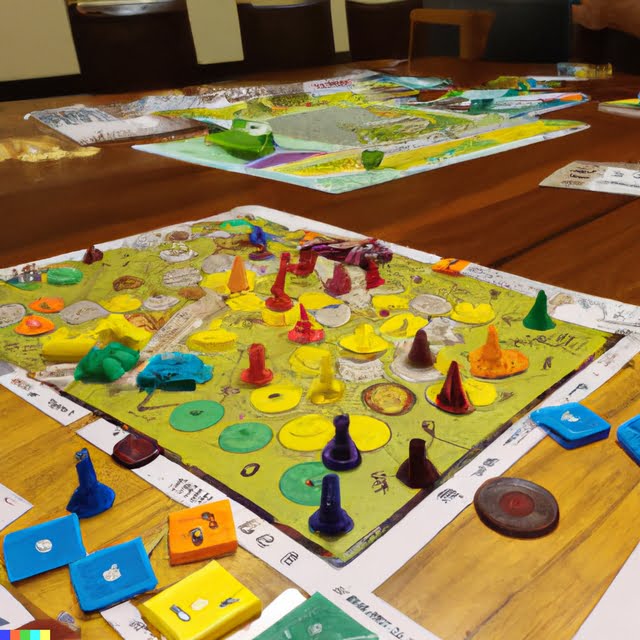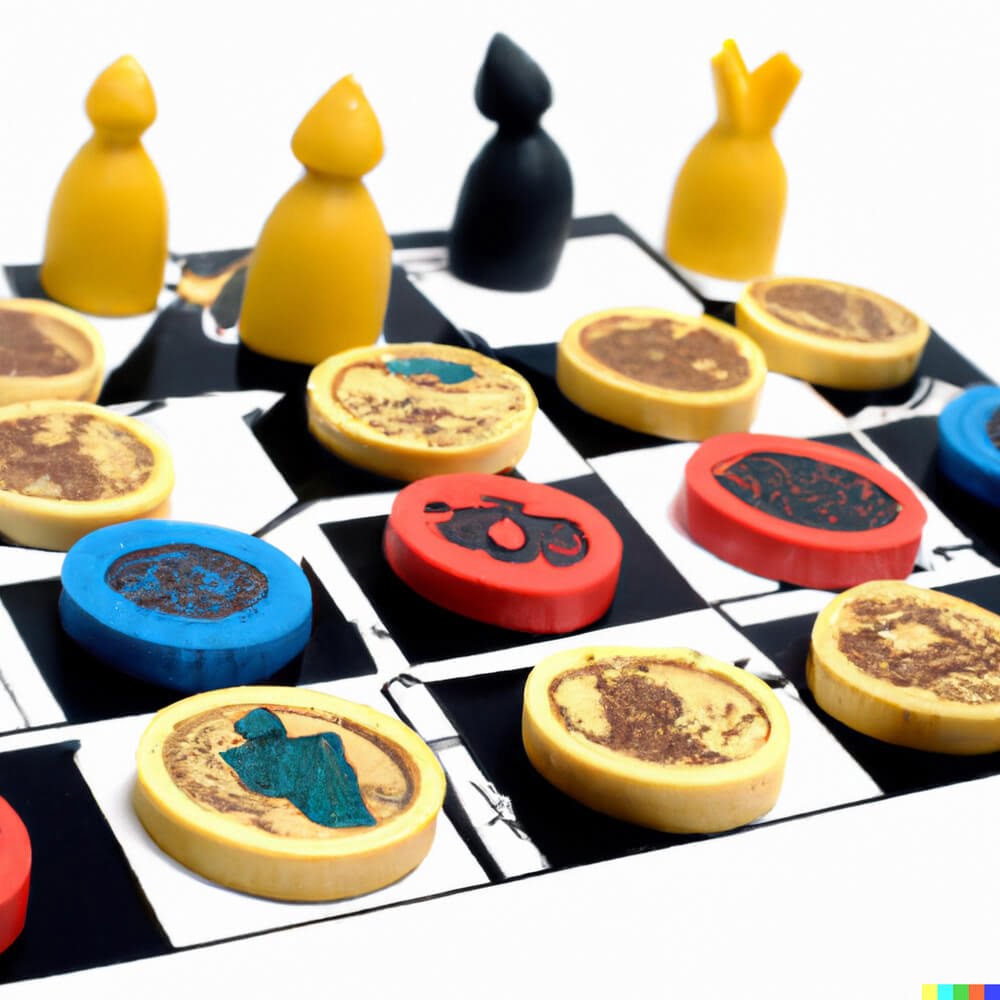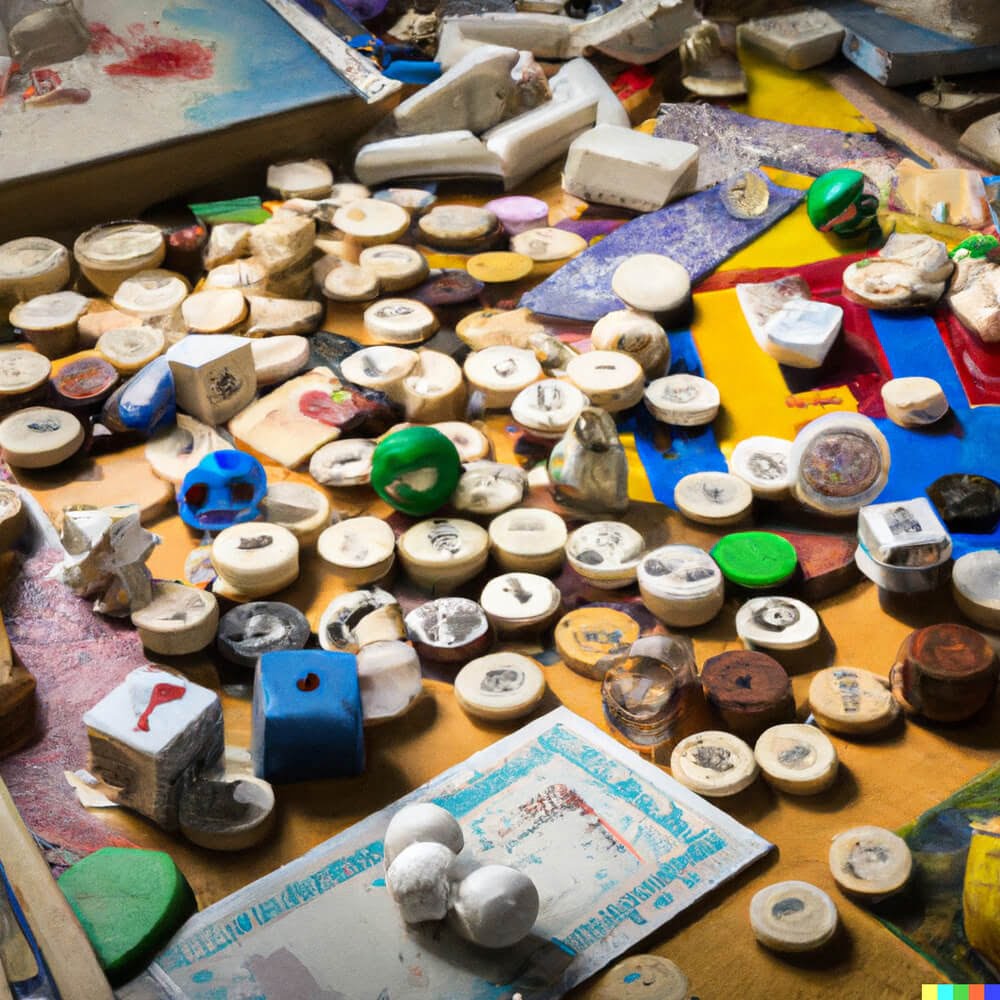Introduction
An Economics Board Game is a game that aims to simulate the economic processes and systems of nations. It can be used to educate students on how money works, the critical thinking skills required for good decision-making and an understanding of basic economic principles such as supply and demand. The game is especially important for economics students, as it can provide an engaging and entertaining way to learn more about economics. Furthermore, it is a creative way to teach students personal financial management, fiscal responsibility, and general budgeting skills. Making an Economics Board game can be a fun activity for both teachers and student alike!
Defining the Rules
When making an economics board game, it is important to think about the rules of the game and outline them clearly. This includes considering how each player will interact with the board, what strategies are open to them and how they can achieve success. When outlining these rules it is also important to consider whatever economic context the game is based on. Questions to ask include: How do resources or credits accumulate? What tools do players use to make decisions? Is there a currency traded in the game and what dictates its value? Additionally, you should think about any rewards or penalties that apply within the game and set clear benchmarks for winning or losing. Once you have done this your economics board game will be ready for play!
Choosing a Theme
Once you have decided to make an economics board game, you will need to select a theme to be the focus of the game. When considering a theme, it is important that you think about the overall game mechanics; what rules and regulations do you want to implement? What resources and assets do you want each player to utilize within the game? These questions should help guide your decision when selecting a theme for your board game. Once you have chosen a topic, such as taxation or poverty, then it’s time to design the elements of your board game.
Creating Game Content – Designing cards, money, and boards
Once you have chosen a theme for your board game, it is time to begin designing all of the necessary content for it. Cards are integral components of most board games and allow players to take actions during their turn. Money can also be used in economics-based games as players compete to accumulate wealth while adhering to certain restrictions. The main feature of any game is usually its board. This will serve as the foundation upon which all other pieces rely so it’s important that this content is designed first and foremost. Make sure that there are enough spaces on the board that represent different locations in order for players to move their pieces around and complete goals throughout their session with the game.
Testing – Establishing objectives and ensuring effective play
Once all of these components have been created, it is vital that you test it out before introducing it into the public domain. This can involve having friends or family play-test it in order for them to give valuable feedback on how well they felt like they could understand and play the game throughout their session with it. Establish certain objectives such as building cities or collecting certain resources in order for players to gain better insight into how well they are doing versus how well one’s opponents are doing – this way fairness can be maintained whilst playing. After conducting testing sessions with close contacts, feel free To open up more comprehensive testing sessions with groups if needed until your economics board-game is perfect!
Designing the Board
When designing an economics board game, it’s important to find a balance between artwork, visuals and gameplay. If the game focuses on something like supply and demand, for example, you may want to use visuals such as bar graphs, pie charts or infographics. This will create an engaging atmosphere that players can better understand. Additionally, ensuring the tiles are color-coded and each has its own unique property lets players orientate the board with ease. To keep aesthetics in mind, use more creative visuals; think of animals representing commodities or vibrant cartoony attractions within the markets that draw in players’ attention. Thirdly, when introducing special spaces ” such as Property Buyer & Seller spaces ” consider increasing their size to make them more noticeable.
Establishing Rules & Strategies
Making a board game centered on economics is an exciting and thought-provoking challenge. To begin, you should establish rules and strategies that will make the game fun to play while remaining faithful to the principles of economics. Make sure all players understand the rules and can create viable strategies to win the game. You’ll need to decide what conditions will determine when one player has won and how strategic decisions in the game correspond with economic decision-making. You may consider detailing scenarios or outcomes that both reinforce economic facts and generate interesting and unpredictable twists for the players.
You should also create challenges for players based on their level of familiarity with economics or related topics such as business, finance, politics, and international relations. This can be done through multiple difficulty levels, side goals, bonuses or rewards for completing objectives in certain ways, etc. Additionally, don’t forget to add elements of chance so that players are never sure which moves they should make or what might happen during each turn – this will help keep them engaged throughout the whole game! Finally, add some aesthetics to your board by using illustrations and other visuals that relate back to economic concepts.
Addressing Unforeseen Scenarios
When making an economics board game, it is crucial to plan for unforeseen scenarios. Since the economy is constantly changing, there will be possibilities that your students or players can’t predict ahead of time. To start, first develop a list of unpredictable yet possible economic situations that could arise within your game. Consider events such as changes in consumer sentiment, economic downturns, natural disasters, and sweeping legislation like trade agreements or tariffs as potential sources of disruption.
Once you have mapped out these possibilities, come up with ways to account for them within the gameplay. It could be in the form of special tokens or cards that players draw when certain criteria are met. Alternately, assuming that some of these unforeseen scenarios may benefit or hinder player progress or opportunity to win/lose the game altogether; you may want to include specific rules on how to handle them and decide a winner/loser if they arise during gameplay. Taking into account these unique elements will add depth to the game mechanics and encourage creative problem-solving while preparing your students or players for playing in real-life economic markets.
Adding Variety
When creating an economics board game, it’s important to make sure that the game has enough variety and elements of surprise to keep everyone entertained. One way you can do this is by adding power-ups and other special bonuses. These could take shape in a variety of forms such as extra resources, special tokens, or physical cards with specific rules applied to them. This will help keep players engaged and create the feeling that the outcome of the game is up for grabs. Additionally, you could create different zones with different rules or objectives so that each area presents its own unique set of challenges. This could be accomplished through various kinds of terrain pieces or card setups. Finally, you could also offer multiple strategies for players to choose from when playing the game by creating varying levels of difficulty or by altering existing rules with optional expansions or rule modifications found on additional cards. With these elements in place your economics board game is sure to provide hours of entertainment!
Re-Evaluating the Rules
When making an economics board game, it’s important to evaluate the rules and see if they can be refined or tweaked for a better gaming experience. This can be accomplished by looking at each rule individually and seeing how it might influence the flow of the game. If any of the rules are too lengthy, consider cutting down on their scope, or perhaps even removing them completely. It’s crucial to also think about the order of play when tweaking and refining rules as this can really change up the dynamic. For instance if a certain card requires a certain move before another move can be made it may be better to move that card to an earlier point in the game whereas a later action may not need to be implemented until nearer the end of game. Lastly, don’t forget to update all other rules depending on these changes, as other mechanics could be affected from subtle alterations. With constant evaluation and refinement of rules during playtesting, you should soon get your economics board game into a suitable shape for enjoyment by players!
Finalizing the Game
Once the rules and game mechanics of the economics board game have been constructed, it’s now time to finalize the game. This entails several steps:
1. Artwork- Design artworks for all components of the board game such as board pieces, player tokens, cards, and money. All art should be visually pleasing, convey the economic theme of the game, and represent economic concepts accurately.
2. Professional Print – Have all of the boards and components professionally printed to ensure a quality product for players.
3. Packaging – Create attractive packaging for the game including a box with display artwork; rulebook with illustrations; and a parts list including components that come in each copy of the board game.
4. Play Testing – Invite family members, friends or others interested to test out play sessions to refine rulesets and make needed adjustments before going to market with the board game.
5. Publication – Decide what type of resources will be used to publish, promote and sell the economics game such as online platforms, third-party retailers or directly through one’s own website or store front location.
Have Fun!
Making an economics board game can be a fun and creative way to teach students about economics. To begin, decide what kind of topics you want your game to cover. Will it focus on supply and demand? Price fluctuations? Management of resources? Once you have chosen the topics, create the board by designing a map or graph that the players will be moving across.
Next, come up with an appealing aesthetic for your board game, making sure to color-code sectors accordingly. For example, natural resources may be labeled green, renewable resources may be labeled blue, and capital goods may be labeled gray. This visual element should add another level of learning for younger players.
Assemble the pieces of your board game by selecting tokens for each player according to their interests. Consider building a bank by supplying cards with monetary values from fake currency. In addition, consider providing tokens such as vehicles or characters that need to collect resources throughout their journey around the board.
You may also want to make rules that reflect real world scenarios related to economics in order to gain a better understanding of how business decisions can affect global markets. Players should enjoy choosing how they allocate funds during resource management challenges as well as competing against one another when trading commodities or deciding market prices for products and services.
Encourage your players to have fun! At its core, this game is intended to help individuals understand various concepts related to economic theories”which could make studying more enjoyable!
Conclusion
Creating an economics board game can be a rewarding and educational activity. By following these steps, you should have a completed game that not only educates players about economics but is also fun to play. First, come up with a broadly themed concept for the game. This could be based on trade, global economies, or any other economics-related topic. Next, select specific elements suitable for the game, such as a currency and resources. Then design different methods of measuring success like WIN/LOSE scenarios. Be sure to include rules around trading among players and incorporating random events like chance cards, large bonuses, or unexpected penalties into the game to add excitement and challenge. Also don’t forget to create visual components like tokens and cards, as well as record-keeping score sheets to accompany each round of play. Finally, solicit feedback from playtesters on what works best in order to fine tune the game before releasing it to the public. With these steps followed closely you’ll have everything you need for an awesome economic board game!

I love playing all kinds of games – from classics like Monopoly to modern favourites like Ticket to Ride.
I created this blog as a way to share my love of board games with others, and provide information on the latest releases and news in the industry.





